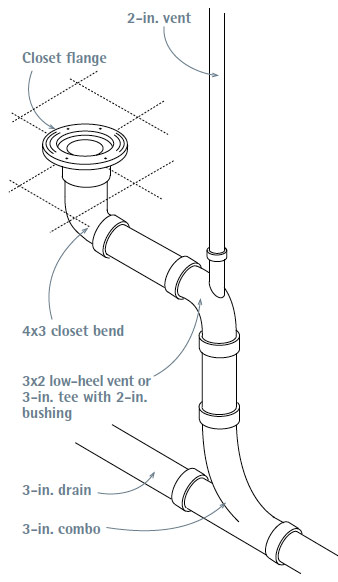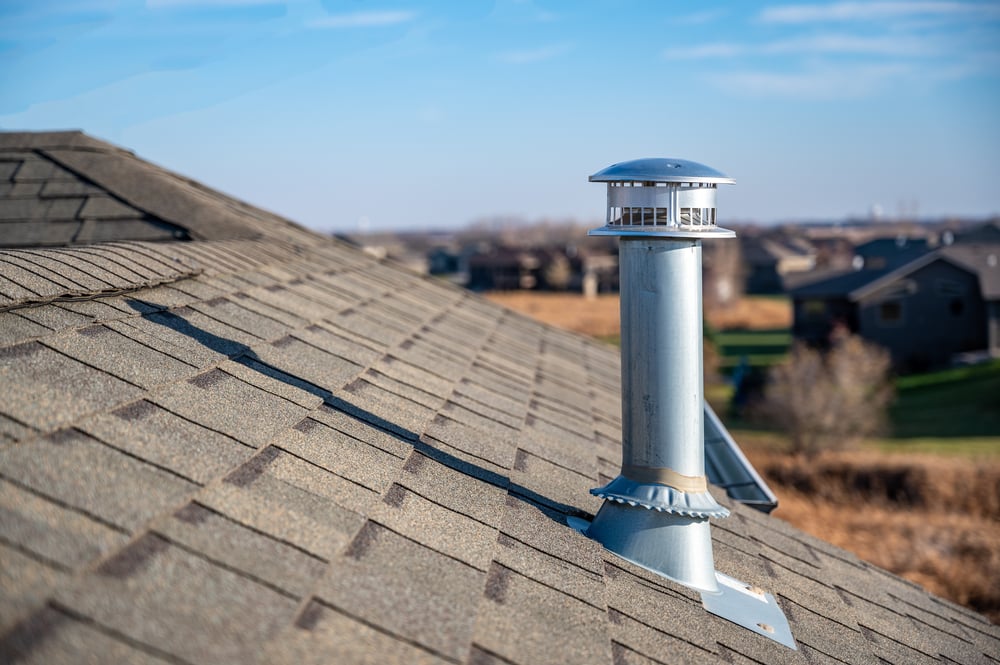Understanding The Value of Correct Ventilation in Plumbing Systems
Understanding The Value of Correct Ventilation in Plumbing Systems
Blog Article
They are making a few good annotation relating to What Is a Plumbing Vent and Why Is It Important as a whole in this post beneath.

Correct air flow in pipes systems is frequently overlooked, yet it is crucial for keeping the capability and safety of your home's plumbing. Ventilation assists control air pressure, avoid the accumulation of dangerous gases, and ensure the reliable removal of waste. In this overview, we will certainly discover the significance of appropriate plumbing air flow, exactly how it functions, and the benefits it brings to your plumbing system.
Just How Air Flow Works in Pipes Systems
Atmospheric Pressure Guideline
Correct air flow preserves balanced atmospheric pressure within the pipes system. When water streams through pipelines, it displaces air. Without adequate air flow, this displacement can produce adverse stress, resulting in slow drains or siphoning of water from catches, which can cause undesirable odors to leak into the home.
Avoiding Drain Gas Buildup
One of one of the most critical functions of pipes vents is to avoid drain gases, such as methane and hydrogen sulfide, from accumulating within the home. These gases can position significant health threats and are extremely combustible. Vent pipelines allow these gases to escape safely outdoors.
Helping in Waste Removal
Air flow assists in the effective removal of wastewater by stopping airlocks in the water drainage system. When air can move openly through the vents, it allows water and waste to flow smoothly via the pipelines, minimizing the danger of blockages and backups.
Benefits of Correct Air Flow
Enhanced System Efficiency
Correctly ventilated plumbing systems operate more efficiently, with less blockages, faster draining, and much less pressure on the pipelines. This effectiveness extends the life expectancy of the plumbing system.
Improved Air Quality
By avoiding sewage system gases from entering your home, appropriate ventilation adds to much better interior air quality, making your living atmosphere healthier and a lot more comfortable.
Protecting Against Water Damages
Adequate air flow helps prevent water from being siphoned out of traps, which can lead to sewer gases getting in the home and causing water damages over time.
Steps to Make Certain Proper Ventilation
Consulting Plumbing Codes
Always get in touch with neighborhood plumbing codes when developing or modifying your pipes system. These codes give the required guidelines for proper airing vent and ensure your system meets security criteria.
Regular Evaluation and Maintenance
Regular evaluations can assist determine potential air flow issues prior to they become major troubles. Maintenance jobs, such as cleaning up vent pipelines and checking for clogs, are crucial for keeping the system in good working order.
Expert Installation
For new setups or significant adjustments, it's important to hire a specialist plumbing technician. They have the expertise to ensure the ventilation system is correctly created and set up according to code.
Comprehending Ventilation in Plumbing
Ventilation in plumbing refers to the network of pipelines that permit air to flow via the drain system. These vents serve several functions, including managing atmospheric pressure within the pipes, stopping drain gases from entering the home, and assisting in the smooth circulation of wastewater.
Types of Plumbing Vents
Main Heap Vent
The major pile air vent, additionally known as the vent pile, is the primary air vent in a pipes system. It extends from the main drainpipe align through the roof, permitting gases to escape and fresh air to enter the system.
Branch Vent
Branch vents link to the main stack vent and serve specific components, such as sinks, commodes, and showers. These vents ensure that each fixture has appropriate air flow to function correctly.
Air Admission Valve (AAV).
An Air Admission Shutoff (AAV) is a one-way valve that allows air to enter the pipes system without the demand for a traditional air vent pipeline extending through the roofing. AAVs are commonly used in remodellings or areas where installing a typical vent is unwise.
Indications of Poor Ventilation in Plumbing.
Slow Draining Fixtures.
If your sinks, bathtubs, or commodes are draining pipes gradually, maybe an indication of inadequate ventilation. Insufficient air circulation can create a vacuum cleaner result, making it hard for water to drain pipes effectively.
Gurgling Seems.
Gurgling sounds originating from drains pipes are usually an outcome of air being drawn with water catches as a result of negative stress in the pipelines. This is a clear indication of insufficient ventilation.
Undesirable Smells.
Sewer smells inside your home are a warning that your plumbing system is not properly ventilated. This might suggest that sewer gases are not being adequately vented outside, leading to potentially hazardous conditions.
Usual Air Flow Blunders.
Inadequate Vent Sizing.
Utilizing small vent pipelines can cause inadequate air circulation and pressure discrepancies in the system. It's vital to use vents that meet the certain demands of your pipes system.
Improper Vent Placement.
Positioning vents too far from the components they offer can reduce their performance. Correct positioning makes certain that air can flow easily and efficiently through the system.
Ignoring Code Demands.
Building ordinance give particular guidelines for plumbing air flow. Ignoring these codes can lead to a system that fails to operate correctly and might result in costly repair work or carcinogen.
Conclusion.
Appropriate ventilation is an essential part of any type of plumbing system, guaranteeing that it operates efficiently and securely. By understanding the importance of ventilation, recognizing the signs of inadequate air flow, and taking actions to preserve your system, you can prevent expensive concerns and secure your home's air quality.
4 Things You Should Know About Your Plumbing Vents
What Plumbing Vents Are
Also called a vent stack, a plumbing vent is a vertical pipe attached to your drain line that runs through your roof. The plumbing vent pipe, or plumbing air vent, removes gas and odors from your plumbing system and allows fresh air to enter the pipes, helping the water to flow out of the drain pipes.
What Plumbing Vents Do
Plumbing vents have two basic functions. One of which is to allow unpleasant smelling wastewater and sewer gasses to escape your plumbing system instead of entering your home. Plumbing vent pipes are typically located on roofs, away from windows, to ensure the fumes exit the home completely.
The other function of the plumbing vent is to move fresh air into your plumbing system. This helps move water through every plumbing fixture in your house, like toilets and sink drains. Think of the way in which you need to let a little air into the bottle as you pour soda in order to make the drink flow smoothly.
Different Types of Plumbing Vents
True vent: This is the most common vent option. In simplest terms, a true vent is a vertical pipe attached to your drain line that exits through the roof. They often function as the main vent that other fixtures can connect to. Re-vent pipe or auxiliary vent: Attached to the drain line near specific plumbing fixtures, re-vent pipes run up and over to connect to the main vent. Common vent: Two plumbing fixtures installed on opposite sides of a wall are typically tied into the vent stack using something known as a sanitary cross. Wet vent: This venting option operates as a drain pipe and a vent at the same time. Wet vent drainage systems drain water from one fixture while venting the air from another. Although they’ve been used for over 100 years, wet vent systems have only recently been added to the plumbing code in many areas. If you’re planning on installing one in a bathroom remodel, make sure you check your local code prior to construction. Loop vent: For free-standing fixtures like kitchen island sinks, loop vents are ideal. These vent pipes run under the floor, rise from the P-trap, and create a loop inside the cabinet sink. Air admittance valve: An AAV is a one-way mechanical valve typically installed at the site of the plumbing fixture. AAVs allow venting to occur without having to tie into a larger venting system. They’re ideal for venting fixtures where you aren’t able to easily connect to an existing vent system. Common Plumbing Vent Issues
Although vent pipes typically don’t have water flowing through them, they’re still subject to many typical plumbing issues. For example, clogs are one of the most common problems associated with sewer vent pipes. If your vent pipe gets clogged, all of your plumbing fixtures tied into the vent stack will be affected.
A sink with a slow drain that bubbles and gurgles or a strong sewage smell around your toilet are both indicators that your toilet vent pipe is clogged. Because most vent pipes exit through the roof, old leaves, twigs or even a bird’s nest could be clogging the pipe.
Clogs in your vent pipe system cause a buildup of negative pressure, meaning that water won’t be able to flow out of your home very well. It’s similar to putting your finger over the opening of a straw to trap water inside. When you remove your finger, the water is able to flow out of the straw.
If you suspect you have any blockage in your vent, make sure you have a professional come examine the situation. Left unchecked, a blocked air vent can lead to other costly repairs, like leaks and sediment buildup.
Under Pressure
Pipe vents are essential aspects of a home’s plumbing system. Owning a home means learning about all sorts of things you never put much thought into before. But by understanding as much as you can about the important systems of your home, you can keep those budgets intact and those anxiety levels low.
https://www.homeserve.com/en-us/blog/home-improvement/plumbing-vents/

I found that content about What Are Plumbing Vents and Why Are They Important? while doing a search on the search engines. Do you know somebody who is sincerely interested in the niche? Do not hesitate to promote it. Many thanks for taking the time to read it.
Book A Service Call Report this page